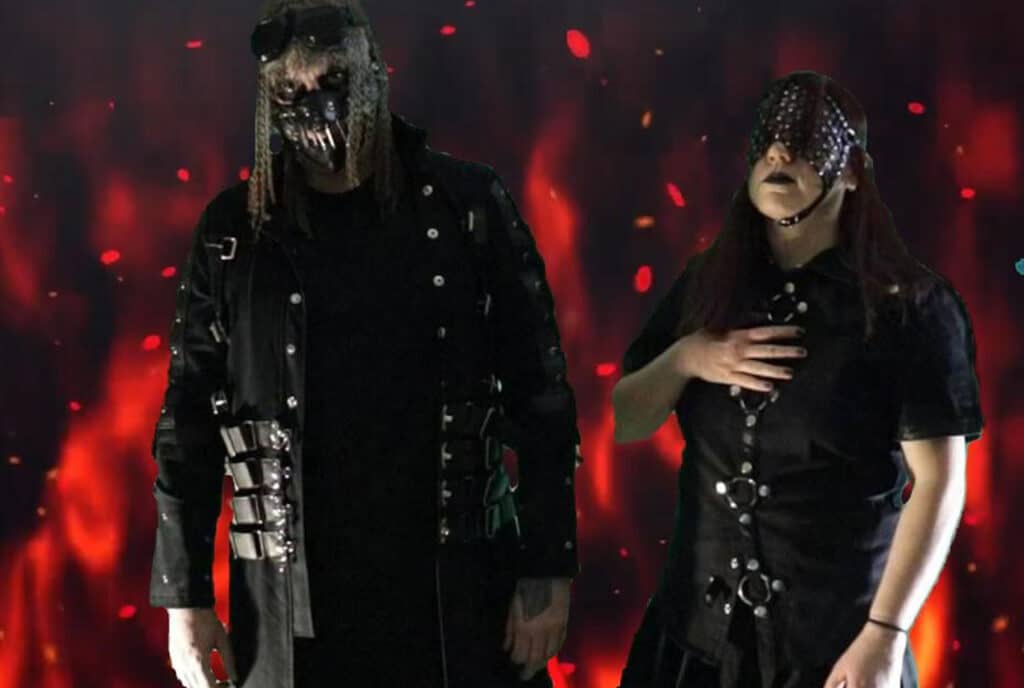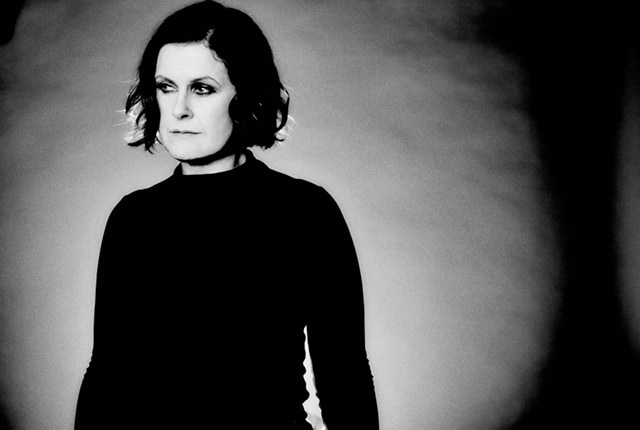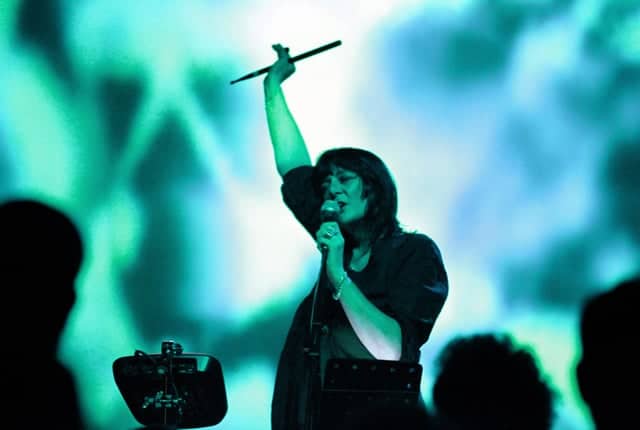With a revamped lineup and broader sonic palette, Milwaukee’s Resurrectionists are back with their second album, “Now That We Are All Ghosts.” Originally founded by Joe Cannon (singer/lyricist, guitar and piano), Jeff Brueggeman (bass), Josh Barto (drums) and Gavin Hardy (pedal steel), Resurrectionists released their debut album, “What Comes In,” in 2019. Hardy moved, and rather than bring in another pedal steel player, the group enlisted multi-instrumentalist Gian Pogliano. The music of Resurrectionists is dark and intense, with strong melodies and emotional vocals. It fuses influences of Americana with a post-punk edge. For “Now That We Are All Ghosts,” the group took the unusual step of commissioning videos for every track. Over a Zoom interview, Cannon discussed the making of the album.
Could you talk about the history of Resurrectionists and how the project came together?
Joe Cannon: We started in early 2019 and it came in the wake of a different band that the bassist and I played in together, called Work. That band was around for like six years. The drummer moved to Texas and so we weren’t able to continue. So Jeff, the bassist, and I tried on a number of different kinds of successor projects. And we ended up with this. Work was kind of a punk band, but we would have these sort of slower desperate-sounding songs too. And so The Resurrectionists was initially like, well, what if we had a band that was just all of the slower, more desperate-sounding stuff? It’s developed more since then, probably mainly because our first version of the band had a pedal steel player.
The first version of the band was swapping between guitar and banjo, bass, drums, and a pedal steel player. So when the pedal steel player moved, we kind of figured out we weren’t gonna be able to replace him because there are not very many pedal steel players in Milwaukee. And the few that there are pretty much wanna play traditional music, country music, and they also want to get paid <laugh>. So we weren’t going to find a really good pedal steel player into weirdo rock music who was willing to be a member of the band. I hit up my friend Gian, who I’ve thought highly of from projects of his from back in the day.
I just kind of gave him the songs and said, you know, we’re replacing a pedal steel player, what would you do with this? And he came up with this combination of a weirdly effected 12-string guitar and various keyboard sounds. He eventually ended up settling on a mellotron as his primary keyboard. So that sort of injected something different into the band. I mean, for one thing, I actually kind of prefer the way the band is now. The pedal steel was very exciting, but when you have a pedal steel player, it’s an oddity, it’s a novelty for a rock band. And every song was sort of based around the fact that we had a pedal steel player. I find with what we’re doing now, we have a wider palette to work with as opposed to like being a pedal steel delivery system <laugh>.
Since two of you had been in the previous band Work, was it obvious that you wanted to continue under a different name? Was that because of the stylistic changes?
Joe Cannon: The drummer and the bassist were very close collaborators. They had played together in multiple different projects. We had a band that was me, Jeff and Kavi, the drummer. When Kavi left, it could not be the same band.
They were a rhythm section in the sense that the two of them together played differently than the two of them apart would. There was just really no possibility of bringing in another drummer and having continuity with that band.
So this is your second album. How did the making of it and the creative process differ from the first?
Joe Cannon: The first album, of course, was with the pedal steel. And so, the aesthetics are quite different. What we’re doing now sort of has more punk and noise in it. It ends up being a bit more aggressive, kind of going back towards what we were doing with Work. And the songs that are post this album, they are even more in that sort of aggressive rock kind of mode. We’ve got other things working too, but with the next set of songs, we kind of went in this direction. So song-wise and arrangements-wise, it’s very different because we have swapped out the pedal steel player for somebody going between, like atmospheric or noisy 12-string guitar and mellotron.
The songwriting also developed because we write somewhat collaboratively, so I’ll usually bring kind of a half-formed idea into practice, and then we’ll start working on it. And so bringing Gian in, he has a different sort of musical mind and a different sort of arranger’s intellect. So it’s just gonna be different. When we recorded this album, we decided to record it ourselves in our practice space. I really am happy with the results, but I’m never doing that again because it took forever. It turns out that when you can endlessly dicker with something and you’re not paying by the hour, you endlessly dicker with it. <laugh>
Are there any particular tracks that you think were impacted by that? Songs that might have turned out differently if you were recording under a time limitation?
Joe Cannon: I think there’s a lot of ideas… We tried a bunch of things, put things in, took them out, put things in, took them out. The recording engineer was our bassist, Jeff. So he would do things like go to the practice space by himself and record and rerecord bass lines until he was happy with it. So there’s a lot of more layered ideas on it than there would’ve been if we had done three or four days in a studio and just like bashed it out.
Does that lead to having to reinterpret things when it comes time to perform it live, since you did have the opportunity to add many layers and spend time on production?
Joe Cannon: No, not so much. I’m not so much of a proponent of the like, ‘Record it like you play [live].’ Because, you know, when you’re playing live, there’s the excitement of watching a band play live, which you don’t have when you’re listening to a record. So it’s almost like the extra sounds and overdubs and things that you can do on a record are sort of like your compensation for not being able to experience the excitement of the band playing live in front of you. And a lot of what we ended up doing was more like extra atmospheric background sounds. So things that you wouldn’t have to replicate on stage or wouldn’t even really try to. I mean, when we play on stage, it’s more of like, you know, we’re a four-piece and we’re not goofing around with stuff. Gian has a tendency, he’s got like the big old pedal board in front of him and he’s making all sorts of sounds. Whereas I’m a bit more of a plug-into-the-amp kind of player.
Since there was a different sound palette to work with this time, to what degree did you have a goal or a sense of what you wanted to do musically with the album?
Joe Cannon: I think it was more the through line came from the set of songs. It wasn’t like we were going in with an overarching concept. It was more like, you know, ‘Hey, we have an album’s worth of songs and they hang together nicely as a group, so let’s record the album.’ I mean, there were two songs on the record that are older songs that I pulled forward from old projects of mine. And those are the two sort of quieter ones. The almost solo banjo song ‘Break & Enter Part 2.’ I wrote that back in like 2004, and it was part of a solo project of mine for a while. And then ‘Let Me Talk You Through This One.’ That song is from like 20 years ago. The rest of them were things that we wrote together as a band.
At what point did you decide to do a video for each of the songs?
Joe Cannon: That sort of developed organically and it ended up becoming a more ambitious project as I went along. During the pandemic, there was an event that we would often play, this music festival that we would often play, that decided to do a virtual event in 2020 for obvious reasons. And so what we contributed to the virtual event was that we got together and recorded a 25-minute set in my attic. A friend of ours filmed it and we really liked the results, so I started talking to him about making a video or two. And so, the videos that came out of that were the ones for “The Rest Cure” and “The New Winter.” And then later on he ended up doing a third video for us for “A Classic Dictionary of the Vulgar Tongue,” the opening track.
So once I got those under development, I thought ‘you know, maybe we can make more videos.’ Because the funny thing is, I’ve been playing music for decades and this is the first band I’ve ever been in that has had videos. Originally it was my assumption was that we would get a video for every song on the record, but some of them would be found footage videos or lyric videos or something like that, not a full on production. But then when I started talking to people around here who make videos, they were excited by the idea and before I knew it, I had placed all of the songs with people who wanted to make videos for them.
As you were making the album, did you have any visual ideas in your mind?
Joe Cannon: Not really. The album cover art is derived from one of the videos. The video for ‘The New Winter’ ends with the band carrying this clock up Reservoir Hill, which is a park in Milwaukee, like a coffin, and then placing it. I just was struck by the sort of incongruousness of this grandfather clock sitting in a field with houses in the background. I took a bunch of pictures of it while we were standing up there and I really liked them. So I ended up wanting to use it as the cover And so the three videos Brian made for us, he’s the guy who did that live set and then we ended up asking him to do three videos, all of them feature the clock in some way or another. I think the closest thing to a visual aesthetic for the album was the first video that we had him do. I had had this idea for a video for a long time that I wanted to make, which ended up being the video for ‘The Rest Cure.’ The idea of the video is that the band is walking through a forest and comes upon a clock. The original idea was that it was going to be like a clock face in the ground, so that it was like the earth itself was the clock. But as we ended up doing it, this ended up working better. So the idea was that we see the clock and the clock is set to two minutes to midnight and we’re freaked out and we intervene and do surgery on the clock, and then it’s three minutes to midnight and we declare victory. And so I think this sort of notion of a clock and this sort of like quasi obsessive imagery of clocks ended up being a kind of visual throughline for the record. And the more that we thought about it, and the more that we brought that in, we just liked it.
For more info and to purchase music, visit resurrectionistsmke.bandcamp.com.










